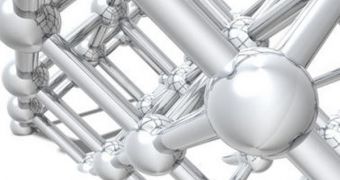A team of investigators from the Biodesign Institute are currently developing a new study technique that, once completed, will allow researchers to peer at the inner workings of proteins.
These are small molecules that play a critical part in supporting life as we know it. They are involved in literally millions of processes within the human body.
Some of these processes include the development of cytoskeletons that keep cells in their proper shapes and the production of the actin/myosin complex that allows muscles to move.
Additionally, proteins are also used by the immune system for activating various types of defense cells. Without the signaling functions that the molecules enable, we would succumb to any infection.
Given the immense number of tasks in which proteins are involved, it stands to reason that being able to understand them better would be an invaluable breakthrough in numerous fields of research.
Now, investigators at the Arizona State University (ASU) Biodesign Institute are developing an observations method that could soon make all this possible.
The team is being led by BI Center for BioEnergetics chemistry professor Sidney Hecht. This work is potentially groundbreaking, seeing how knowing the action of proteins could lead to the development of new therapies for a wide range of major illnesses.
Hecht is conducting the work in collaboration with expert Stephen J. Benkovic. He is a leading authority on the mechanisms of enzymatic catalysis, and holds an appointment as a professor of chemistry at the Pennsylvania State University.
The group is actually focusing its work on enzyme, which are a specific class of proteins that contribute to promoting or inhibiting various chemical reactions, by acting as catalysts.
The two researchers recently received a new grant from the US National Institutes of Health (NIH). The grant, which was awarded so that they could continue their work, is worth $1.3 million, and will be awarded over a period of four years.
One of the main goals in this investigation is understanding the way enzymes act in the smallest, finest of details. This means that the researchers need to peer at the very structure of the molecules.
This line of research can provide additional data into the folding, flexibility and dynamics of protein structures, which are the traits that make effective catalysis possible.
Once this knowledge is obtained, researchers can then begin to synthesize artificial enzymes or proteins, which could perform the same tasks as their natural counterparts, but without any side-effects.

 14 DAY TRIAL //
14 DAY TRIAL //